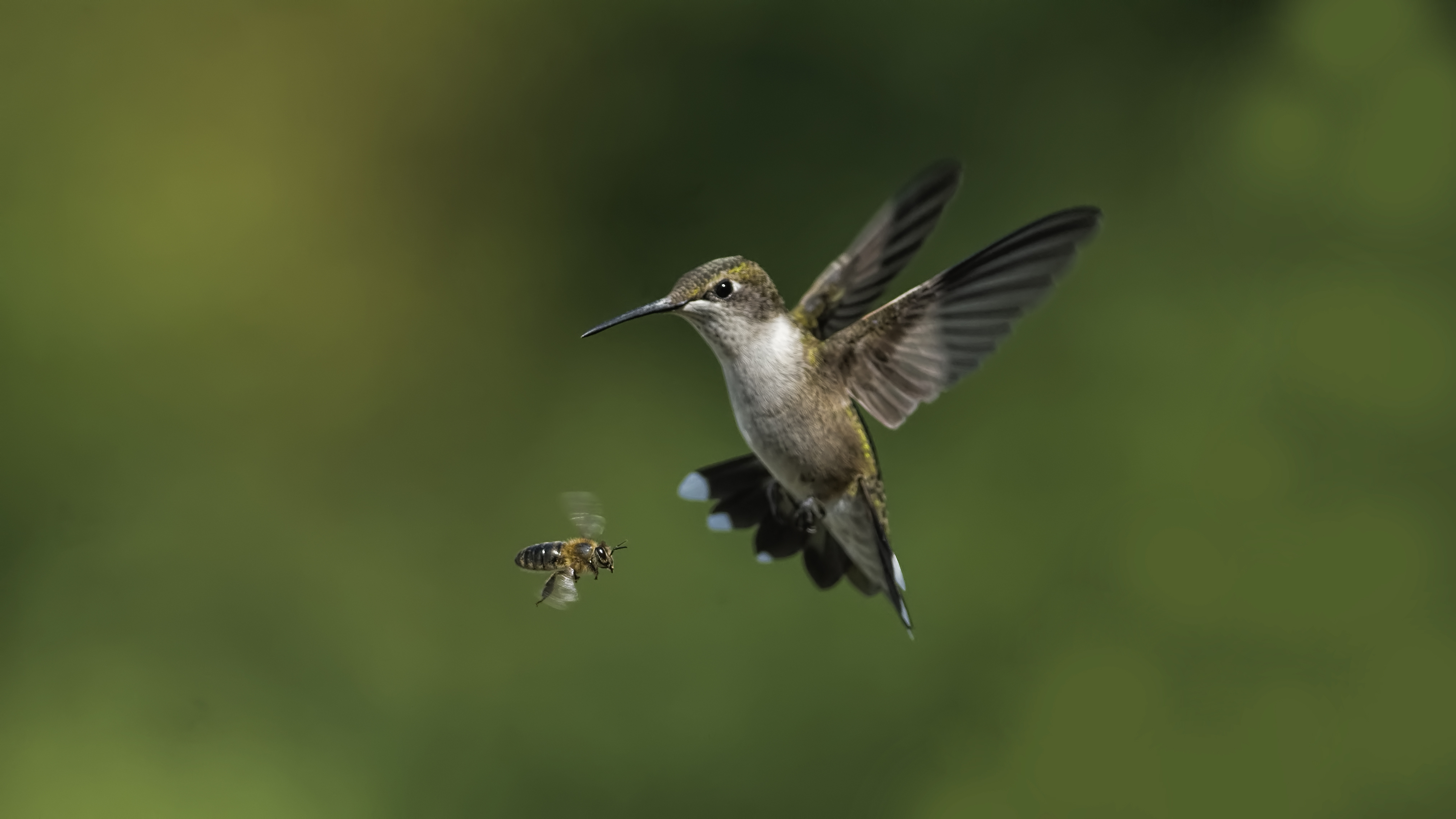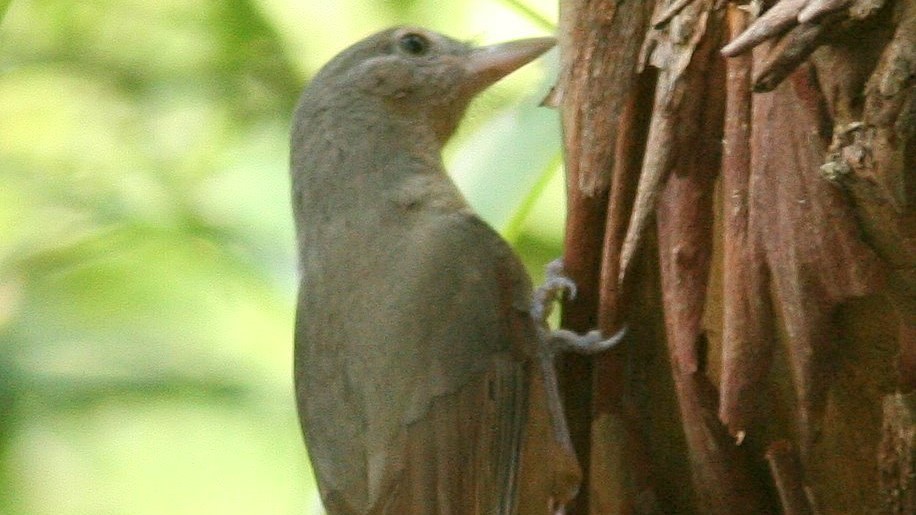"The birds and the bees": Meaning and origin of the phrase
"The birds and the bees" is a story parents tell their children to deflect the question "Where do babies come from?" The phrase refers to the talk about sex.

The phrase "the birds and the bees" is a term used to explain the mechanics of reproduction to younger children, relying on the imagery of bees pollinating and eggs hatching to substitute for a more technical explanation of sexual intercourse.
It is a way of deflecting the inevitable question that every parent dreads: "Where do babies come from?" and it is an alternative to the explanation that the stork delivers babies.
Related: Strange love: 13 animals with truly weird courtship rituals
What is the origin of the phrase "the birds and the bees"?
It is uncertain when the phrase was first used or how it gained popularity. It does not necessarily mean that parents are explaining how birds and bees reproduce. The connection between human sexuality and eggs and pollination is vague, which can cause some confusion among curious children.
Though there are some variations, the story typically involves bees pollinating flowers, symbolizing male fertilization, and the birds laying eggs, which equates to female ovulation. In another telling of the story, a baby is created when a bee stings a bird.
According to The Los Angeles Times, the "The Morris Dictionary of Word and Phrase Origins" (HarperCollins, 1988) says this about the potential origin of the phrase: In past centuries, the facts of reproduction were "presented by analogy — telling how birds do it and trusting that youngsters would get the message by indirection."

Although the exact origin of the phrase is uncertain, some have their theories. For example, in 2000, Ed Finegan, a professor emeritus of linguistics and law at the University of Southern California, told The Los Angeles Times that the phrase as a euphemism for sex was likely inspired by two specific writers.
Samuel Taylor Coleridge referred to birds and bees, separately, in his 1825 poem "Work Without Hope." The poem's text (described in the next section of this article) is definitely intended to be a reference to sex, Finegan said.
The phrase "birds and bees" also appears in a 1644 diary entry penned by John Evelyn, Finegan said. The diary was published a century after Evelyn's death and stands as a principal literary source describing the life and manners of people in 17th century England. Evelyn used the phrase when describing the interior of St. Peter's Basilica, and in context, Finegan speculates that the text broadly references human sexuality. It's possible that other writers picked up the phrase "birds and bees" around the time the diary was published, he added.
What songs and books use the phrase "the birds and the bees"?
There are quite a few allusions to the phrase in literature and song. As previously noted, one of the early references to this bird and bees as a euphemism for reproduction is Samuel Taylor Coleridge's 1825 poem, "Work Without Hope":
"All Nature seems at work. Slugs leave their lair —
The bees are stirring — birds are on the wing —
And Winter, slumbering in the open air,
Wears on his smiling face a dream of Spring!
And I, the while, the sole unbusy thing,
Nor honey make, nor pair, nor build, nor sing."
Another commonly cited use of the phrase is American naturalist John Burroughs' 1875 set of essays, "Birds and Bees, Sharp Eyes and other Papers." These were attempts to provide children with simple explanations of nature, but there is no attempt at sex education.
Dr. Emma Frances Angell Drake described the birds and bees in a section of the publication "The Story of Life," which was widely distributed between 1893 and 1930. In her explanation of reproduction to her young daughters, she used images of blue eggs in the robin's nest, the wind blowing pollen dust from one plant to the other, and bees gathering honey from the flowers.
Related: Giraffe sex is even weirder than we thought, and it involves pee
A more direct reference can be found in Cole Porter's lyrics to the 1928 song "Let's Do It."
"It is nature, that’s all
Simply telling us to fall in love
And that's why birds do it, bees do it
Even educated fleas do it
Let's do it, let's fall in love"
The phrase also appeared in a 1939 issue of the "Freeport Journal Standard": "A Frenchman was born sophisticated: he knows about the birds and the bees. In consequence, French films are made on a basis of artistic understanding that does not hamper the story."
A more modern reference to the phrase occurred on "The Simpsons." episode Homer vs. Patty and Selma, first broadcast in 1995, according to Phrases.org.uk. The episode includes a scene has 10-year-old Bart Simpson remarking to his friend Milhouse, "The Sun is out, birds are singing, bees are trying to have sex with them — as is my understanding ..."
Where to learn more about "the birds and the bees"
Read more about the history of the phrase "the birds and the bees" with this article from World Histories. Explore an age-by-age guide to teaching kids about the birds and the bees with this informative article from Family Education. Check out five of the best books for explaining the birds and the bees with this article from Maternity & Infant Family.
Bibliography
- Kathleen Kelleher, Los Angeles Times, " Birds Do It, Bees Do It, but Why'd We Say That?". 2000.
- Gary Martin, Phrase Finder "The birds and the bees", Phrases.org.uk.
- Burroughs, John. Birds and Bees: Sharp Eyes, and Other Papers. Vol. 1. Houghton, Mifflin and Company, 1887.
- Davidson, Graham. "Coleridge:" work without hope". The Wordsworth Circle 45.1 (2014): 21-29.
- Amy Lang’s Birds and Bees and Kids. Tips and tools to start the sex talks.
Sign up for the Live Science daily newsletter now
Get the world’s most fascinating discoveries delivered straight to your inbox.
Kim Ann Zimmermann is a contributor to Live Science and sister site Space.com, writing mainly evergreen reference articles that provide background on myriad scientific topics, from astronauts to climate, and from culture to medicine. Her work can also be found in Business News Daily and KM World. She holds a bachelor’s degree in communications from Glassboro State College (now known as Rowan University) in New Jersey.
- Nicoletta LaneseChannel Editor, Health
- Daisy DobrijevicReference Channel Editor, Space.com










